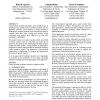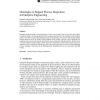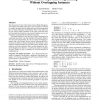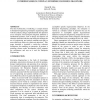5227 search results - page 1 / 1046 » Enterprise modeling using class and instance models |
APSEC
2000
IEEE
13 years 9 months ago
2000
IEEE
Current object-oriented formalisms, such as UML, focus on describing class models and use instance models only for depicting scenarios. Little attention is being devoted to defini...
CMOT
2000
13 years 4 months ago
2000
Enterprise design knowledge is currently descriptive, ad hoc, or pre-scientific. One reason for this state of affairs in enterprise design is that existing approaches lack an adeq...
ICFP
2010
ACM
13 years 5 months ago
2010
ACM
Type classes have found a wide variety of uses in Haskell programs, from simple overloading of operators (such as equality or ordering) to complex invariants used to implement typ...
ECCV
2006
Springer
14 years 6 months ago
2006
Springer
This paper proposes a method for detecting instances of shape classes that exhibit variable structure. The term "variable structure" is used to characterize shape classes...
WSC
1996
13 years 6 months ago
1996
of abstraction, or modeling, is a major element in Enterprise Engineering. Enterprise engineering deals with the analysis, design, implementation and operation of an enterprise. T...




